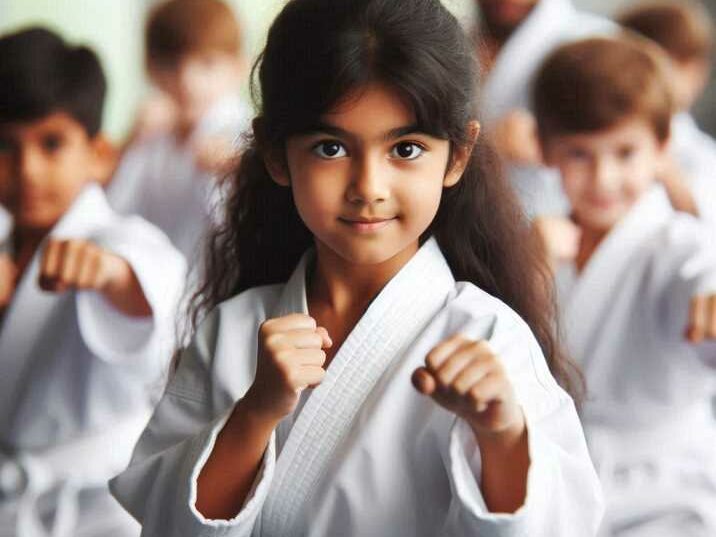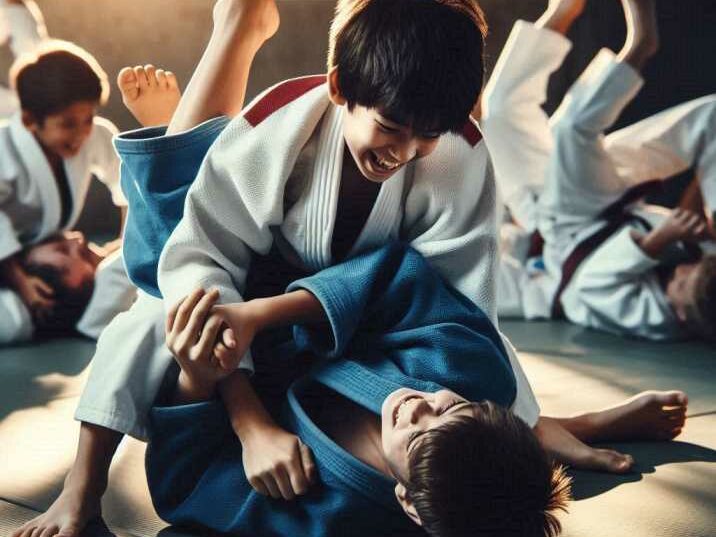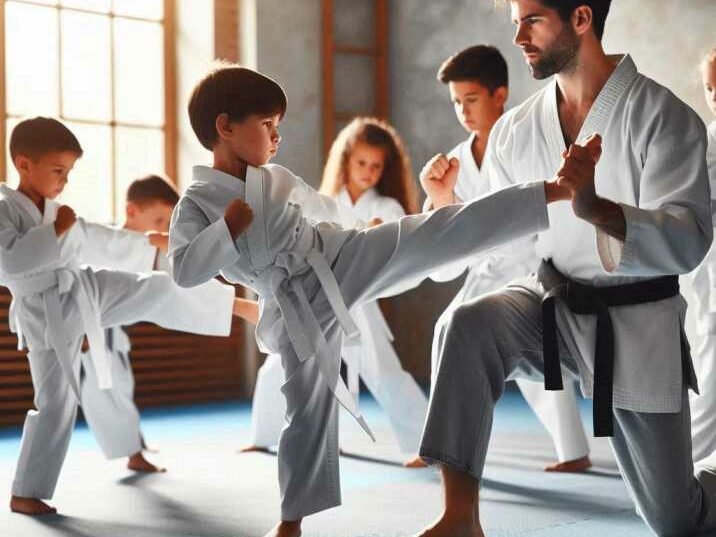Introduction:
Table of Contents
In recent years, martial arts has gained immense popularity among children. Not only does it promote physical fitness and self-defense skills, but it also instills discipline, confidence, and respect. However, many parents may wonder: are there different types of kids martial arts programs available? The answer is a resounding yes! Let’s delve into the diverse array of options to help you find the perfect fit for your child.
Types of Kids Martial Arts Programs:
Karate:
Karate is a traditional Japanese martial art that emphasizes striking techniques using hands, feet, elbows, and knees. It is renowned for its focus on discipline, strength, and coordination. In karate classes for kids, instructors often incorporate a variety of activities such as forms (katas), sparring, and drills to keep children engaged and motivated. Through consistent practice, children not only improve their physical fitness but also develop mental attributes such as self-discipline and perseverance. Moreover, karate fosters a sense of respect for oneself and others, as students learn to follow etiquette and honor martial arts traditions.

Taekwondo:
Taekwondo, originating from Korea, is characterized by its dynamic kicking techniques and fluid movements. It places a strong emphasis on self-control, respect, and perseverance. Taekwondo classes for kids provide a structured environment where children learn the fundamental techniques through repetitive drills, forms (poomsae), and controlled sparring sessions. Beyond physical skills, Taekwondo instills mental discipline and resilience, as students strive to overcome challenges and achieve their goals. Additionally, the belt-ranking system in Taekwondo serves as a tangible measure of progress, motivating children to continue their journey of self-improvement.

Judo:
Judo, developed in Japan, focuses on throwing and grappling techniques designed to subdue opponents. Unlike striking arts, Judo teaches children how to use an opponent’s energy and leverage to their advantage, promoting agility and quick thinking. In Judo classes for kids, safety is paramount, with instructors emphasizing proper falling techniques (ukemi) and controlled sparring. Through practicing Judo, children not only improve their physical coordination and balance but also develop essential life skills such as resilience and adaptability. Moreover, the cooperative nature of Judo fosters a sense of camaraderie and mutual respect among practitioners, promoting a supportive learning environment.

Brazilian Jiu-Jitsu (BJJ):
Brazilian Jiu-Jitsu (BJJ) is a ground-based kids martial arts that focuses on submission holds and positional control. It is particularly effective for self-defense situations, as it teaches children how to neutralize larger opponents using leverage and technique rather than sheer strength. BJJ classes for kids often include a combination of drilling techniques, live sparring (rolling), and interactive games to reinforce learning in a fun and engaging manner. Through practicing BJJ, children not only improve their physical fitness and self-defense skills but also develop valuable traits such as patience, problem-solving, and humility. Moreover, the supportive atmosphere of BJJ gyms encourages teamwork and camaraderie, fostering lasting friendships among young practitioners.
Kung Fu:
Kung Fu, also known as Chinese martial arts, encompasses a diverse range of styles that originated in China. These styles vary in techniques, philosophies, and training methods, but they all share a common emphasis on self-defense, physical fitness, and personal development. Kung Fu classes for kids often focus on basic stances, punches, kicks, and forms (katas), gradually progressing to more advanced techniques as students gain proficiency. In addition to physical training, Kung Fu places strong emphasis on discipline, respect, and character development, instilling values such as perseverance, humility, and integrity in young practitioners.
Mixed Martial Arts (MMA) for Kids:
Mixed Martial Arts (MMA) is a full-contact combat sport that combines techniques from various kids martial arts disciplines, including striking (such as boxing and Muay Thai) and grappling (such as Brazilian Jiu-Jitsu and wrestling). While traditional martial arts focus on specific styles or techniques, MMA integrates a wide range of skills, making it a versatile and comprehensive martial art. MMA classes for kids often emphasize fundamental techniques, sparring drills, and conditioning exercises, tailored to the developmental needs and safety considerations of young practitioners. In addition to physical training, MMA promotes mental toughness, adaptability, and strategic thinking, preparing children for both competition and self-defense scenarios.
Capoeira:
Capoeira is a Brazilian martial art that combines elements of dance, acrobatics, and music. Originating from the African slave communities in Brazil, Capoeira is known for its fluid, rhythmic movements and dynamic kicks. In Capoeira classes for kids, children learn to express themselves through synchronized movements and learn about the cultural significance of the art form. Capoeira promotes physical fitness, coordination, and creativity, making it an engaging and enjoyable martial arts option for children.
Weapons-Based Martial Arts:
Weapons-based martial arts involve the use of traditional weapons such as swords, staffs, and nunchaku. These martial arts disciplines originated from various cultures and historical contexts, each with its own unique techniques and training methods. Some popular examples include:
Kendo:
A Japanese martial art that focuses on swordsmanship using bamboo swords (shinai) and protective armor (bogu). Kendo classes for kids emphasize discipline, respect, and proper technique, teaching students to wield the sword with precision and control.
Arnis/Eskrima/Kali:
Indigenous martial arts from the Philippines that utilize sticks, knives, and other bladed weapons. Arnis/Eskrima/Kali classes for kids emphasize coordination, timing, and fluidity of movement, as students learn to defend against armed opponents and execute offensive strikes with weapons.
Bo Staff Training:
Bo staff training involves the use of a long wooden staff as a weapon. Originating from various Asian martial arts traditions, bo staff techniques focus on strikes, blocks, and spins, promoting physical dexterity and agility.
Benefits of Kids Martial Arts Programs:
Physical Fitness:
- Martial arts training involves a variety of exercises that not only improve physical strength but also enhance cardiovascular health. From jumping jacks to push-ups and from agility drills to cardiovascular conditioning, martial arts classes provide a well-rounded workout.
- Additionally, martial arts often incorporate elements of stretching and flexibility training, which help prevent injuries and improve range of motion. Stretching routines before and after class ensure that children maintain flexibility and mobility in their joints and muscles.
Self-Defense Skills:
- In addition to learning specific techniques, children are taught valuable principles of situational awareness, including recognizing potential threats and understanding escape routes. This holistic approach to self-defense empowers children to assess and respond to different scenarios effectively.
- Martial arts classes also emphasize the importance of verbal assertiveness and boundary-setting, teaching children how to assert themselves confidently and assertively in potentially dangerous situations without resorting to physical force.
Discipline and Focus:
- Martial arts training instills habits of punctuality and respect for schedules, as children are expected to arrive on time for classes and participate fully in training sessions.
- To foster concentration and mental focus, instructors often incorporate mindfulness exercises and meditation techniques into martial arts classes. These practices help children develop the ability to block out distractions and stay present in the moment, both on and off the mat.
Confidence Boost:
- Beyond individual achievements, martial arts classes provide opportunities for children to collaborate with their peers and contribute to group activities. By working together towards common goals, children learn the value of teamwork and cooperation.
- Martial arts schools often organize events such as belt ceremonies, tournaments, and community outreach programs, where children can showcase their skills and receive recognition for their accomplishments. These experiences bolster children’s confidence and sense of belonging within the martial arts community.
Social Skills:
- Martial arts classes serve as a melting pot of diversity, bringing together children from different backgrounds, cultures, and ages. This environment fosters empathy, tolerance, and understanding, as children learn to appreciate and respect each other’s differences.
- Martial arts instructors serve as positive role models and mentors, guiding children not only in their martial arts journey but also in their personal growth and development. Through their interactions with instructors and peers, children learn valuable life lessons such as perseverance, sportsmanship, and humility.
Conclusion:
Exploring the world of kids martial arts programs reveals a rich tapestry of options designed to cater to children’s diverse interests and abilities. Whether it’s the traditional discipline of Karate, the dynamic kicks of Taekwondo, the grappling techniques of Judo, or the ground fighting of Brazilian Jiu-Jitsu, there’s something for every child to enjoy and benefit from. By enrolling your child in a kids martial arts program, you’re not just investing in their physical fitness, but also in their character development and personal growth. So why wait? Take the first step towards a healthier and more confident future for your child today!
FAQs (Frequently Asked Questions):
- Q: What age can children start martial arts? A: Most martial arts schools accept children as young as 4 or 5 years old, but it varies depending on the program.
- Q: Do kids martial arts programs promote violence? A: No, kids martial arts programs emphasize discipline, respect, and self-control, teaching children to use their skills responsibly.
- Q: How often should my child attend martial arts classes? A: It depends on the individual’s schedule and commitment level, but attending classes 2-3 times per week is common for optimal progress.
- Q: Are martial arts classes safe for children? A: Yes, reputable martial arts schools prioritize safety by providing proper instruction, supervision, and equipment.
- Q: Will my child earn belts in martial arts? A: Yes, many martial arts programs use a belt system to signify progress and achievement. Students advance through different belt ranks as they demonstrate proficiency and knowledge.


